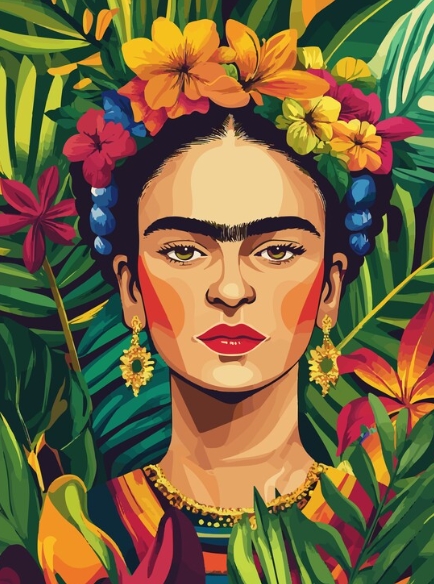Frida Kahlo is an artist whose name is synonymous with bold, vibrant self-portraits. Her paintings are deeply personal and often reflect her physical and emotional struggles.
The Artist Behind the Paintings
Frida Kahlo was born in Mexico in 1907. She experienced a multitude of health issues throughout her life, including a traumatic bus accident that left her with lifelong pain. These experiences greatly influenced her art, as she often used her self-portraits to explore themes of pain, identity, and self-reflection.
Her Unique Style
Kahlo’s paintings are known for their bright colors, intricate detailing, and surreal elements. She often incorporated elements of Mexican culture and folklore into her work, creating a unique and distinctly personal style that has captivated art lovers around the world.
Exploring Identity and Feminism
Many of Kahlo’s self-portraits explore themes of identity, gender, and feminism. She often depicted herself wearing traditional Mexican clothing and accessories, using these symbols to challenge traditional ideas of beauty and femininity.
A Legacy of Resilience
Despite facing immense physical and emotional pain throughout her life, Frida Kahlo remained resilient and continued to create art that resonates with people to this day. Her self-portraits continue to inspire and provoke thought, encouraging viewers to reflect on their own identities and experiences.
Unlocking the Mystique
By immersing oneself in Frida Kahlo’s iconic self-portraits, one can begin to unravel the layers of symbolism and emotion that she infused into her work. Each brushstroke and detail tells a story, inviting viewers to connect with the artist on a deeply personal level.
In conclusion, Frida Kahlo’s self-portraits are more than just paintings – they are windows into her soul and a reflection of her innermost thoughts and feelings. By delving into the mystique of her work, we can gain a deeper appreciation for the complexity and beauty of one of the most iconic artists of the 20th century.



